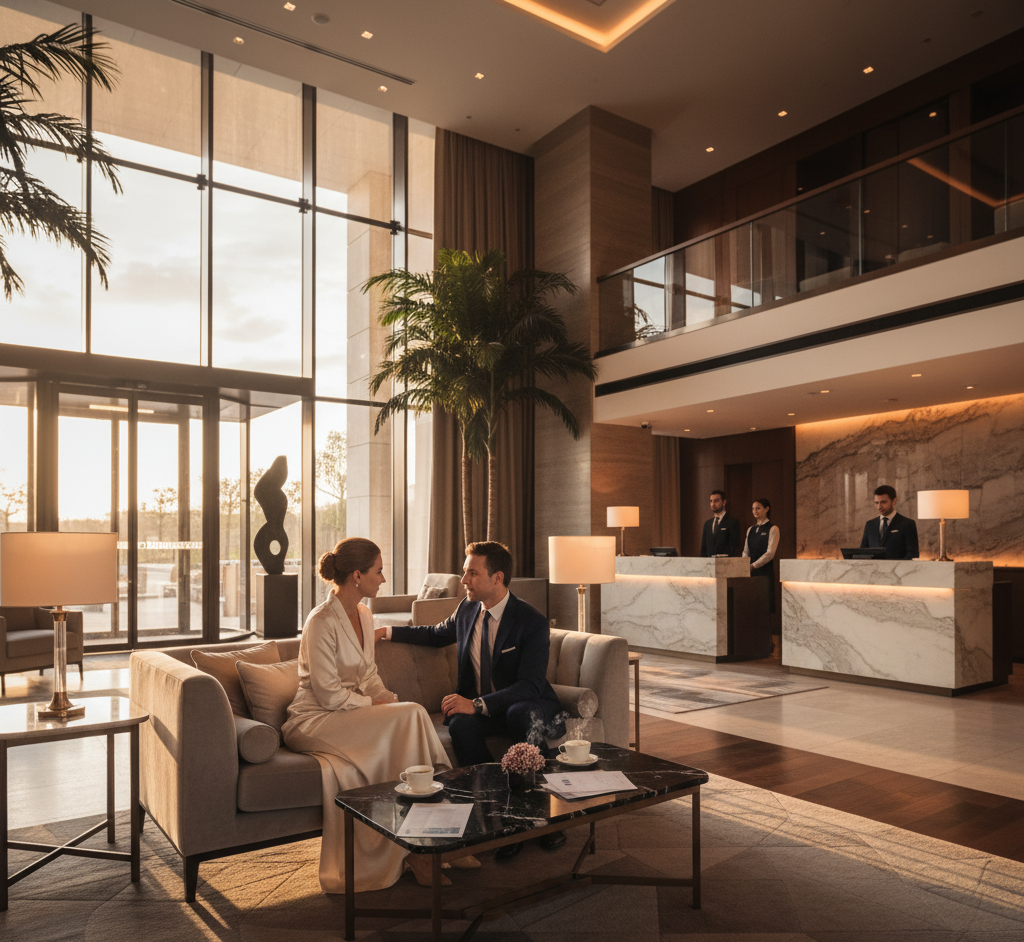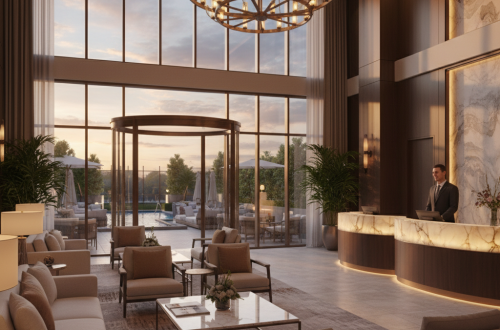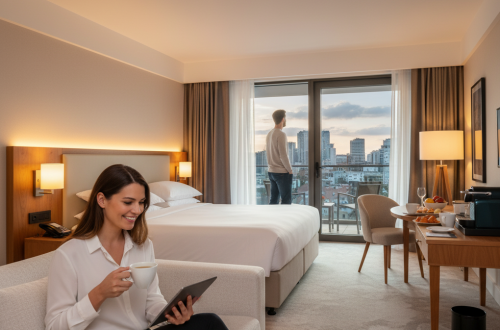Modern hotels run on a complex web of technology. At the heart of this web are three core systems: the Property Management System (PMS), Customer Relationship Management (CRM) platform, and Point of Sale (POS) system. The PMS handles room reservations, check-ins/check-outs, guest folios, and housekeeping status. The CRM manages guest profiles, loyalty programs, and communications. The POS processes transactions in restaurants, bars, spas, and other outlets. Traditionally, these systems often operated in isolation. A front desk might use the PMS while the restaurant uses a separate POS, and marketing or guest services use a standalone CRM. This disconnected approach can lead to data silos, duplicate data entry, and inconsistent information, which in turn create inefficiencies and hinder the guest experience. Today, however, the industry is embracing integrated tech stacks that connect PMS, CRM, and POS into a unified ecosystem. Integrating these once-separate systems is transforming hotel operations by boosting efficiency and delivering a better experience for guests.
Breaking Down Silos for Greater Efficiency
One of the biggest advantages of an integrated tech stack is the dramatic improvement in operational efficiency. When PMS, CRM, and POS are connected, they constantly exchange data in real time. This means information only needs to be entered once and it updates everywhere automatically. Staff no longer spend time transferring data from one system to another or reconciling records at the end of the day. For example, if a guest charges a dinner to their room, an integrated POS will immediately post that charge to the PMS folio – no manual input or phone calls required. The next morning, the front desk can see all restaurant, bar, or spa charges already in the guest’s bill. This eliminates manual billing entry and reduces errors, as confirmed by hotels seeing far fewer billing discrepancies once their systems were linked. In fact, industry data from 2024 showed that hotels integrating their PMS and POS cut checkout times in half on average, thanks to faster, accurate folios, and even saw a 15% increase in package sales due to smoother charge bundling and tracking.
Real-time integration also speeds up routine tasks that used to create bottlenecks. Consider a common scenario: a guest requests a late checkout. In a siloed setup, the front desk might approve it in the PMS, then separately notify housekeeping and manually adjust the billing in another system. With integration, one update in the PMS automatically pushes to housekeeping schedules and the POS/billing data. The room status is adjusted instantly for housekeeping, and any late checkout fee or change in folio is reflected without extra steps. As a result, staff spend less time on administrative coordination and more time focusing on the guest. A connected PMS-CRM-POS environment essentially allows the hotel to operate as one cohesive unit rather than separate departments. Housekeeping, front office, food & beverage, and sales teams all have access to the information they need without delay. An integrated platform provides organization-wide visibility, so that, for instance, accounting can view up-to-date charge totals, and managers can pull unified reports across all revenue centers without manually merging data. This not only makes daily operations smoother but also improves decision-making. Managers get a single source of truth with real-time data on bookings, revenues, and guest activities, enabling quicker and more informed decisions.
Key efficiency gains from integrating PMS, CRM, and POS include:
- No More Duplicate Data Entry: Staff enter guest details or updates in one system and they propagate everywhere. This reduces human error and saves significant labor hours. Front desk agents, for example, don’t need to re-type restaurant charges or re-enter guest contact info in multiple places.
- Streamlined Check-In/Check-Out: Integration can automate steps in the guest arrival and departure process. All charges from various outlets are consolidated in the PMS, so check-out is faster and hassle-free. Hotels with connected systems have shorter checkout lines and fewer billing disputes, directly improving guest satisfaction as well.
- Improved Staff Collaboration: With systems talking to each other, each department stays in sync. The front desk knows immediately if a guest added a spa service via POS, and housekeeping knows when a room is vacated or extended via PMS updates. This synchronization fosters teamwork and eliminates the need for constant phone calls between departments. In turn, issue resolution is quicker because everyone has the latest information at their fingertips.
- Unified Reporting & Analytics: Integrated data means managers can generate reports that cover the whole operation – combining room revenues (PMS), ancillary spend (POS), and guest demographics or stay patterns (CRM) in one view. This comprehensive insight helps identify trends and opportunities that would be missed if data was scattered. Hotels can analyze, for example, which guest segments (from CRM profiles) spend the most on property or how on-site purchases influence overall revenue per stay, and then adjust strategies accordingly.
Overall, breaking down the silos between PMS, CRM, and POS makes hotel operations more accurate, agile, and scalable. As one hospitality technology expert put it, a disconnected hotel is an inefficient hotel – every manual handoff is a chance for error or delay. Integrated tech stacks remove those friction points, allowing the hotel to run like a well-oiled machine.
Enhancing the Guest Experience
Beyond internal efficiency, integrated systems have a profound impact on guest experience. Modern travelers expect seamless service and personalization. They want to be recognized and catered to without having to repeat themselves at every touchpoint. Connecting the PMS, CRM, and POS enables a hotel to deliver that kind of high-touch, customized experience consistently.
A unified tech stack creates a 360-degree view of each guest. All the data about a guest’s stays, preferences, and spending flows into one combined profile. For example, the PMS provides the guest’s stay history and room preferences; the POS contributes details on their dining or spa purchases; the CRM adds in any survey feedback or preferences they’ve shared, as well as their loyalty status. With this holistic profile, staff can personalize service in meaningful ways. Front desk agents might see that a returning guest prefers feather pillows and have them ready, or that it’s the guest’s birthday and arrange a special amenity. If the CRM indicates a guest is a loyalty VIP, the PMS can flag that so the guest is warmly acknowledged at check-in. Similarly, restaurant staff might notice via the POS history that a guest is a vegetarian, so the chef can offer a suitable welcome snack. These small touches delight guests and make them feel valued. According to hospitality experts, an integrated stack allows hotels to “personalize at scale”, using technology to remember guest preferences and tailor offerings without burdening staff with manual tracking. The result is that technology fades into the background and the guest experiences what feels like effortless, thoughtful service.
Integration also empowers proactive and targeted communication that enhances the guest journey. With PMS-CRM connectivity, hotels can automatically trigger the right messages at the right time. For instance, when a guest checks in, the CRM could send a personalized welcome email or app notification that draws on their profile (“Welcome back, we’ve reserved your favorite corner suite!”). During the stay, if the guest charges a round of golf to their room via the POS, the CRM can note that interest and the hotel might send a mid-stay message about a spa discount, knowing the guest is already enjoying on-site amenities. After check-out, all of the stay and spend information is in the CRM, enabling a highly tailored follow-up: thanking the guest for using specific services and perhaps offering a promotion on those for their next visit. This level of personalized marketing and loyalty rewards is only possible when systems share data in real time. Hotels that know their guests’ preferences and habits can surprise and delight them – leading to stronger loyalty and better reviews.
Another guest-facing benefit of integrated tech stacks is the seamless on-property experience it creates. When systems are unified, guests encounter less friction and fewer mistakes during their stay. Think of the frustration when a guest has to repeat their dietary restrictions to every department, or when their request made during booking (e.g. honeymoon package with champagne on arrival) fails to reach the team that prepares the room. Disconnected systems often cause those drops in communication. In contrast, integration ensures that guest requests and info travel with the guest. A request logged in the CRM or booking notes will appear in the PMS for front office and housekeeping to see. Likewise, if a guest’s keycard is linked with the PMS, the restaurant POS can instantly pull up their room number and dining preferences, making service quicker and more personal. The checkout process is smoother too: guests don’t face surprises or delays because all their charges from different outlets are already consolidated. Surveys show that faster, error-free checkouts and unified billing significantly improve guest impressions at departure.
Importantly, integrating CRM data with on-site systems also enables hotels to recognize and reward loyalty in real time. When a repeat guest arrives, staff can be alerted through the PMS if this guest is a frequent stayer or part of a loyalty program tier, as recorded in the CRM. This knowledge lets employees instantly acknowledge the guest (“Welcome back, we’re happy to see you again!”) and perhaps offer an upgrade or perk without having to dig for information. During the stay, if the guest hits a certain spending threshold (tracked via POS transactions), the CRM could automatically apply a reward or notify management to do something special. Such real-time responsiveness makes guests feel truly appreciated and tends to foster brand loyalty. As one hotel marketing professional noted, showing guests you value their loyalty – whether through personalized promotions or exclusive invitations – turns one-time visitors into lifelong fans. All of this is streamlined by the tech stack integration, which provides the data and automation needed to act quickly on guest behaviors and preferences.
In summary, connecting PMS, CRM, and POS elevates the guest experience by enabling personalized, anticipatory service and frictionless interactions. Guests enjoy the convenience of not having to repeat information, faster service at every turn, and communications/offers that feel tailored to them. When their experience is smooth and customized, guests are more satisfied – and satisfied guests are more likely to return and recommend the hotel to others. In the age of high guest expectations, an integrated tech stack is becoming key to meeting and exceeding those expectations.
Industry Adoption and Future Outlook
Given the clear benefits to efficiency and guest satisfaction, it’s no surprise that hotels worldwide are moving toward more integrated technology stacks. What was once considered an advanced luxury for big chains is now seen as an operational must-have even for independent hotels. In a global survey of hospitality tech trends, system integration topped the priority list for hotel IT investments, reflecting a recognition that disconnected systems are no longer viable in a modern, guest-centric operation.
Hotel technology providers have responded to this need by building more connectivity into their products. Many modern PMS solutions are cloud-based with open APIs, allowing them to plug into CRM, POS, and other systems more easily. This openness means a hotel isn’t locked into one vendor’s ecosystem but can choose the tools that fit its needs and still have them talk to each other. Some vendors now offer all-in-one platforms or pre-integrated modules covering PMS, POS, and CRM functionality under one roof. Others have formed partnerships – for example, PMS companies integrating directly with popular CRM software – to ensure seamless data flow between their systems. All of these developments are positive for hoteliers, as they have more options to achieve a unified stack without expensive custom IT projects.
The trend is also toward real-time two-way integrations. Earlier integrations might have been one-directional or updated only periodically, but today’s hotel systems sync information instantly and bi-directionally. This means, for instance, if a guest updates their email or consent preferences in the CRM, the PMS reflects it immediately; if the front desk changes a room assignment in the PMS, the CRM and POS “know” right away. Such responsiveness further reduces lag and error in operations. Additionally, integrated data is powering advanced capabilities like analytics and AI-driven service. With all guest and operational data in one place, hotels can apply machine learning to identify patterns (such as which amenities drive high reviews) or to forecast demand more accurately. This paves the way for smarter revenue management and hyper-personalized marketing campaigns, giving integrated hotels a competitive edge.
Of course, achieving a fully integrated tech stack is not without challenges. Hotels must invest in the right technology and often update legacy systems that don’t support integration. There are also important considerations around data security and privacy when consolidating guest data. However, industry best practices and compliance standards (like GDPR for guest data protection) are evolving alongside integration efforts, and reputable tech vendors design integrations with security in mind. Training staff on new, integrated systems is another critical step – the best technology only shines if employees know how to use it effectively. Hotels that succeed in these areas see rapid returns in efficiency and service quality.
Looking ahead, integrated tech stacks will likely become the norm across hotels globally, rather than the exception. The hospitality industry has learned that technology works best when it works together. By connecting the foundational systems of PMS, CRM, and POS, hotels create a platform to build exceptional operations and experiences. Employees are empowered with the information and tools to perform their jobs better, and guests enjoy a stay where every interaction feels smooth and personalized. This alignment of efficient operations with outstanding service is exactly what modern hotels need to thrive in a competitive market. In essence, integrated tech stacks are changing hotel operations by uniting all parts of the business toward a common goal – delighting the guest at every turn, while running as intelligently and efficiently as possible.
Lisa Schwarz, “6 Business Benefits of System Integration in Hospitality,” NetSuite, Jan 17, 2025. netsuite.comnetsuite.com
Vanshikha Dhar, “Understanding the Benefits of Hotel PMS and POS Integration,” Hotelogix Blog, Jun 2, 2025. blog.hotelogix.comblog.hotelogix.com
Joscelyn Comstive, “Why every hotel should connect their PMS and CRM,” Mews Blog, 2023. mews.commews.com
Alliants, “Realigning Hotel Tech Stacks – How to Enhance Your Digital Guest Experiences,” Alliants.com, 2023. alliants.comalliants.com
Clouddle Inc., “Hotel PMS Integration: Boost Efficiency & Revenue,” Clouddle Blog, Jul 2, 2025. clouddle.comclouddle.com
See our previous article: https://hoteltechinsight.com/2025/10/28/top-5-cloud-pms-solutions-for-small-hotels-in-2025/



